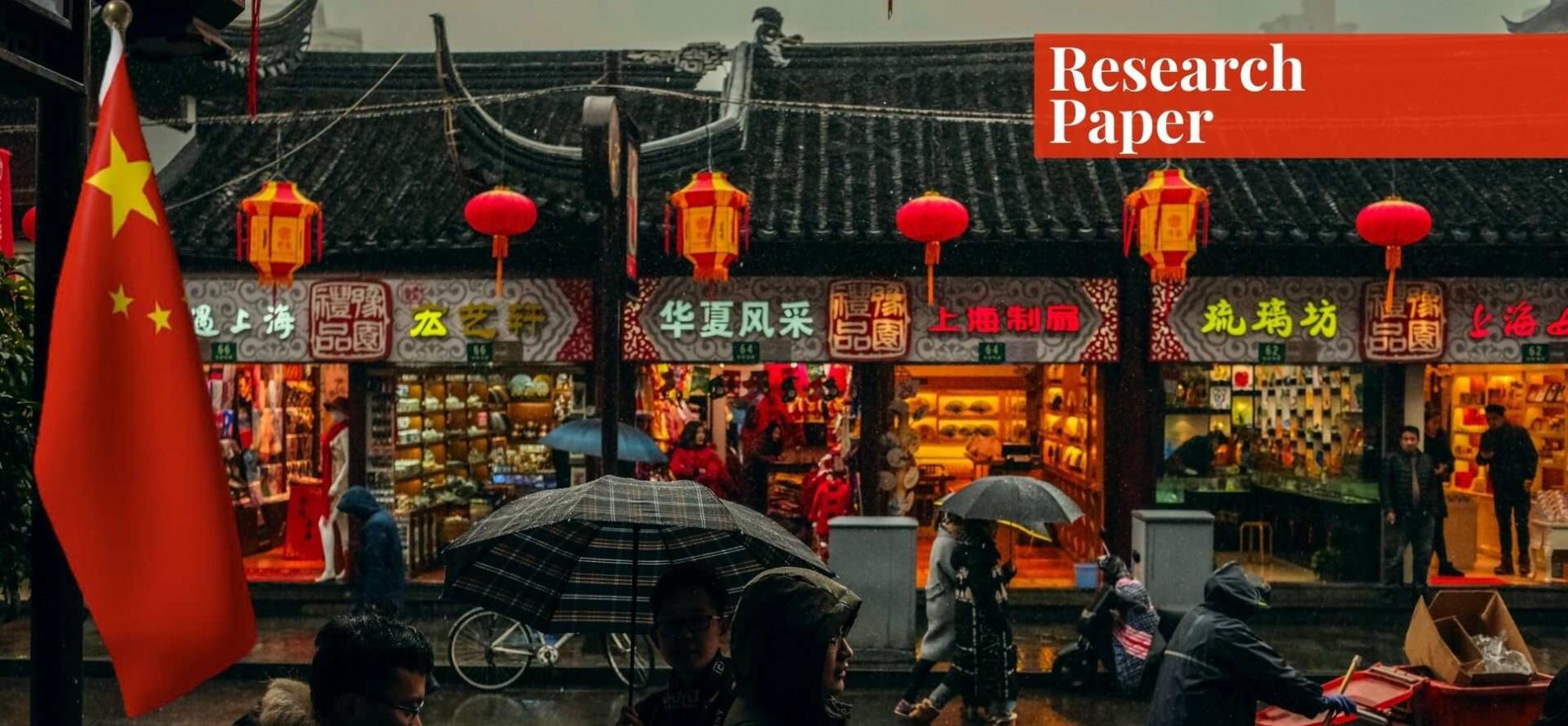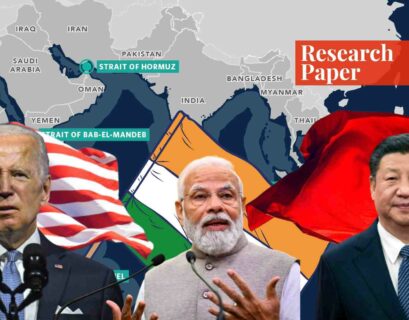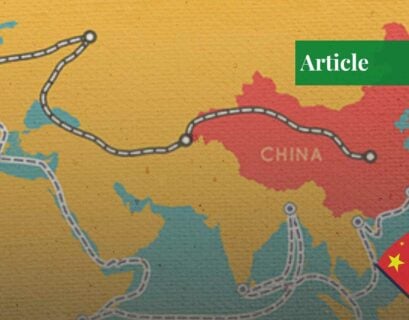Ms Arfah Zia is pursuing an MS degree in Development Studies from NUST. She also has a Bachelor of Social Science with a major in Anthropology from Bahria University, Islamabad.
A Classic Case
The demographic transition of China has played a huge role in the development of the country. Over the past few decades, China has put forth remarkable strategies to control its population, investing more in human capital. From an array of outstanding policies to a lot of efforts by the government and its citizens, China has been able to achieve recognition in its demographic trends.
However efficient its policies may be, there are both positive and negative implications that have come about over the course of time. Rapid growth in China was observed after it had shifted to a market-oriented economic reform back in the 1980s. Its one-child policy, in particular, drove its economic growth, thus rendering a reduced dependency ratio in the country and improving its labor quality and productivity growth (Hsu et al., 2018).
Demographic Trends in China
As mentioned above, the one-child policy brought a lot of ease in reducing the population size of China. It helped reduce child mortality and achieve a decrease in fertility rate, as a result of which the country was able to achieve the economic transition. A low population not only accelerates an increase in GDP but also indicates that there is better healthcare because of more investments (Ranganathan, 2015).

Post-World War II escalated the concept of ‘baby boom’ from 1946 to 1964 (Gibson et al., 2010). The world was in crisis because of the rising population. To tackle the issue, China presented its one-child policy and introduced an array of birth control programs to reduce the size of the population. They were successfully able to do so; nevertheless, it resulted in the decline of the population, and new challenges spurred.
It is plausible that a decrease in fertility would mean an increase in the working-age population, which lead to more per capita output. However, if the roles were to be reversed, with time, young and old age consumption levels are likely to increase (Hsu et al., 2018). Such is the case in China, the increase in working-age population and decline in fertility has been perceived more chaotic than favorable.
The One-Child Policy
The one-child policy was taken up by the neo-Malthusian perspective. This policy has slowed down growth and encouraged changes in age structure, and yet its long-lasting effects have proven fruitful in its reinvestments on human capital and institutional development. On the other hand, life expectancy is high in China; there is an increase in the rate of retirement and the allocation of resources has shifted from the working generation to the elderly.
Another major setback is that of rising sex ratios and female child survival (Mason, 2010). Historically, China had a trend of taking the lives of female babies before birth or after they were born. With the introduction of the one-child policy, male babies were preferred over females because the former could support older parents (Jimmerson, 1990). There is an increase in female mortality, sex-selective abortion, and female infanticide (Cheng).

Now that it comes down to marriage, there is social stratification and lots of Chinese men remain bachelors even in their 40s since there are not enough females to marry (Mason, 2010). Other factors may be the regional differences, for example, the death rates in rural areas are much higher than that of urban areas, and life expectancy is higher in rural areas (Mason, 2010).
Massive population migration from rural to urban and from the western part to the eastern part were recorded as well. This increase in the influx of people from rural to urban can deter and slow down rural development (Feng, n.d.). One of the biggest factors of decline in fertility is the increase in the older population.
Since the policies are not suitable, the older generation is always neglected in terms of insurance, medical care, and old age service industries (Feng, n.d.). The term that best fits China is the ‘demographic overachiever’. The younger population is in decline, thus weakening the demand for consumption (Feng, 2011).
The decrease in the younger population can also increase the demand for more labor (Feng, 2011) and, as a result, a decrease in labor would account for a rise in wages (Wortham, n.d.). Over the years, about 26% of economic growth in China has been because of the working-age population (Bloom, 2008). An increase in female participation, improvement in institutional quality, and focus on research and development has opened up more avenues for economic growth (Bloom, 2008).
Conclusion
In many ways, China has been an early achiever in terms of low mortality rate, low fertility rate, increase in working-age population and much more. Nonetheless, its rapid growth has caused many challenges, resulting in infertility. This is alarming, since, in the next few years, China could lose more than half of its population. There have been debates on a two-child policy, but that is yet to be presented by the government.
References
- Cheng, M. K. (n.d.). Economic Implications of China’s Demographics in the 21st Century. IMF.
- David E. Bloom, J. E. (2008). Demographic Change and Economic Growth in Asia.
- Feng, W. (n.d.). The Silver and White Economy: The Chinese Demographic Challenge. https://www.oecd.org/employment/leed/OECD-China-report-Final.pdf
- Feng, W. (2011). The Future of a Demographic Overachiever: Long Term Implications of Demographic Transition in China. In Implications of Demographic Transition in China.
- Gibson, J. W., Jones, J. P., Cella, J., Clark, C., Epstein, A., & Haselberger, J. (2010). Ageism And The Baby Boomers: Issues, Challenges And The TEAM Approach. Contemporary Issues in Education Research (CIER), 3(1), 53–60. https://doi.org/10.19030/cier.v3i1.161
- Jimmerson, J. (1990). Female Infanticide in China: An Examination of Cultural and Legal Norms. UCLA Pacific Basin Law Journal.
- Mason, W. F. (2010). The Demographic Factor in China’s Transition. In L. B. Rawski, China’s Great Economic Transformation. Cambridge University Press.
- Hsu, M., Liao, P.-J., & Zhao, M. (2018). Demographic change and long-term growth in China: Past developments and the future challenge of aging. Review of Development Economics, 22(3), 928-95. https://doi.org/10.1111/rode.12405
- Ranganathan, S., Swain, R. B., & Sumpter D. JT. (2015). The demographic transition and economic growth: implications for development policy. Palgrave Communications, 1-8. https://doi.org/10.1057/palcomms.2015.33
- Tyers, J. a. (n.d.). Contrasting Giants: Demographic Change and Economic Performance in China and India. Elsevier .
- Wortham, A. (n.d.) China’s Population: Issues and Trends in China’s Demographic History. Asia for Educators.
If you want to submit your articles, research papers, and book reviews, please check the Submissions page.
The views and opinions expressed in this article/paper are the author’s own and do not necessarily reflect the editorial position of Paradigm Shift.



















